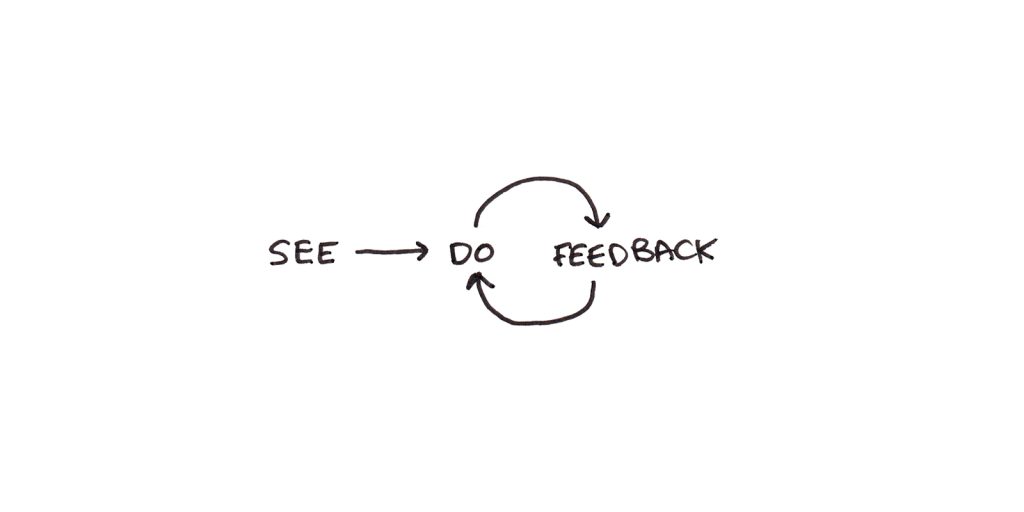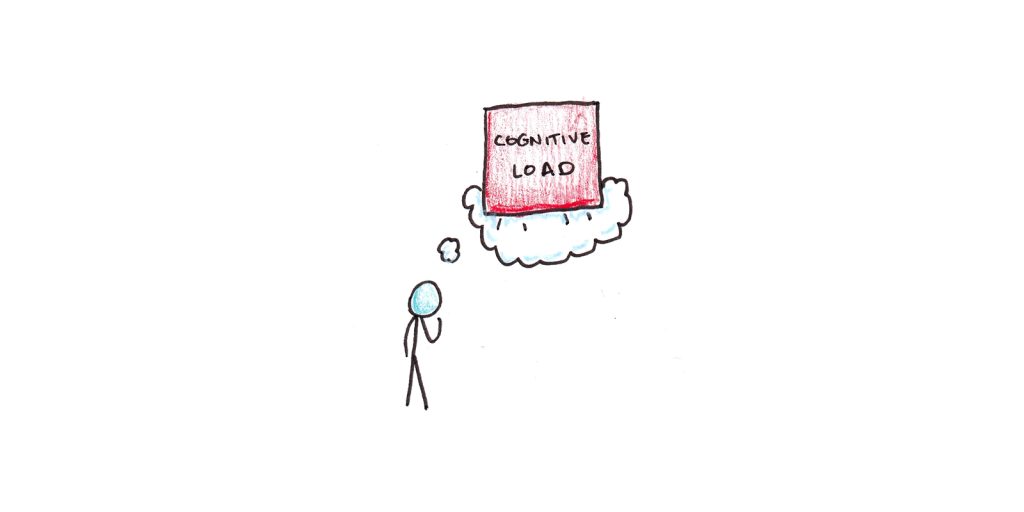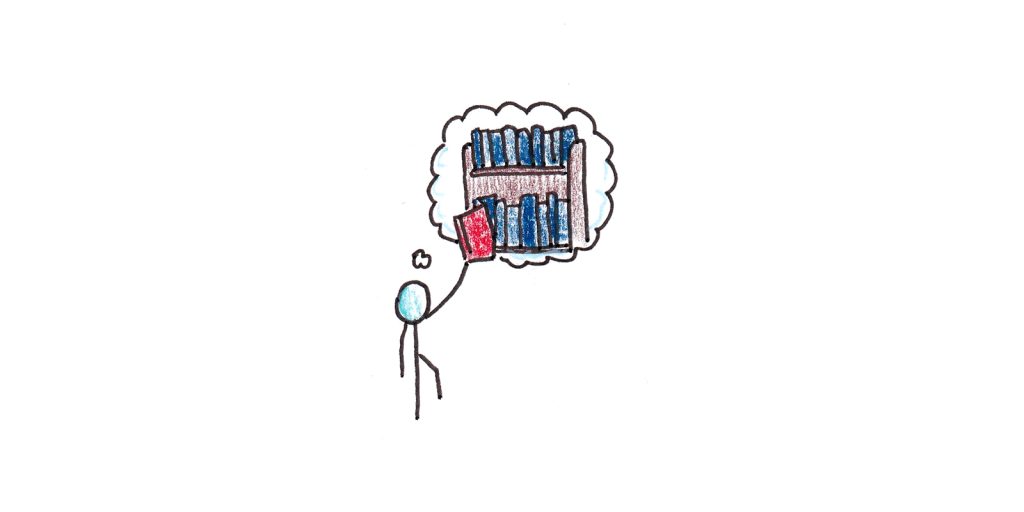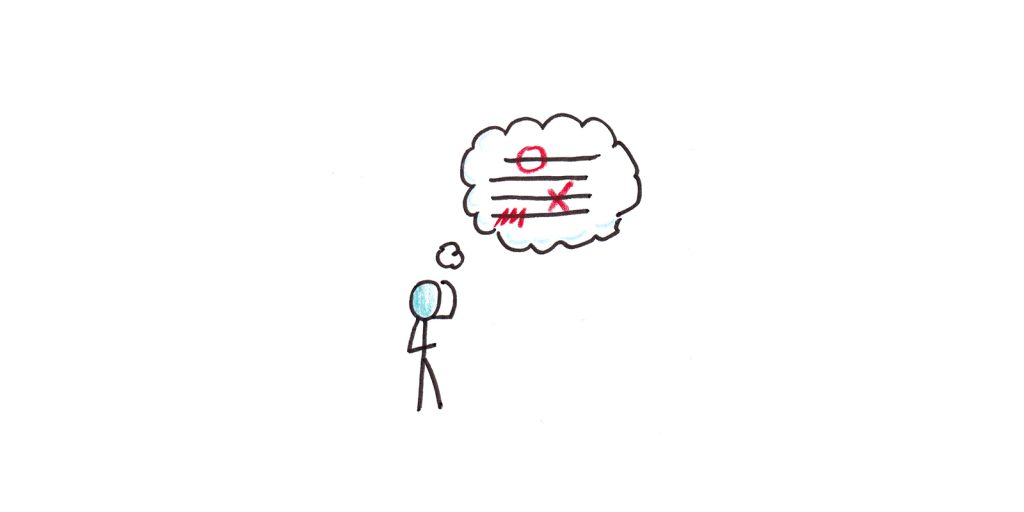Next week, I’m opening a new session of my popular course, Rapid Learner. Registration will begin on Monday, April 25th and closes on Friday, April 29th. Below is a lesson drawn from the material I teach in Rapid Learner. If you find it helpful, be sure to check out the full course.
The foundation for effective learning is practice. You get good at things by doing them. Yet within this simple observation is a maze of complexity. How should you practice to get the most improvement with the least time and effort?
Good practice has three components:
- See. Look for an example of how to solve a problem.
- Do. Solve the problem yourself.
- Feedback. Check whether you got the right answer.

These basic steps form a loop that can allow you to learn any skill or subject. Much of effective learning is about optimizing the details of the see-do-feedback loop. Let’s look at each part.
1. See: The Power of Examples
People don’t solve problems by building general-purpose problem-solving skills. Instead, decades of research shows that experts in domains as diverse as chess, programming, and medical reasoning get good by acquiring tons of specific patterns of knowledge.
What’s the best way to acquire these patterns? Graham Cooper and John Sweller examined this in high-school students learning algebra in a now-famous study. Half the students were given a set of problems and asked to solve them. The other half were given examples where the problems were worked step-by-step and the solutions were provided. After this, both groups took the same test. Who did better?
The group given worked examples ended up doing better than those who solved the problems themselves—even when the problem-solving group correctly answered every question in the practice session.
The authors explain their results in terms of cognitive load. When faced with a question where you don’t know the pattern for finding the answer, people engage in a mentally taxing process of problem solving. This process is efficient for finding the solution to the problem in front of you, but it doesn’t leave much capacity for learning the pattern you use to answer that type of problem.

Sweller’s results show why seeing examples and getting explicit instructions for performing a task are so beneficial—the pattern can be learned correctly rather than guessed at.
2. Do: The Need for Retrieval
Of course, if watching alone led to skill, we wouldn’t need to practice at all. We could watch cooking shows and instantly become chefs or see a football (soccer) match and pick up dribbling skills. Acquiring patterns isn’t enough—the knowledge needs to become an automatic skill in order to be useful.
A study by Jeffrey Karpicke and Janelle Blunt shows that practice isn’t just for physical skills. They had students learn from a text. Some read the passage once and then tried to recall everything they had learned. Others read the same passage multiple times.
Before the test, re-readers thought they had mastered the material. Those who only read it once and then recalled the material expected to do poorly. Yet the test results were the reverse. Those who practiced recall did better than re-readers.

How do we reconcile this study with the previous one, where those solving problems did worse than those who just looked at examples?
There are two answers here. First, even in Karpicke and Blunt’s study, subjects who practiced recall still read the text once. The disadvantage was for re-reading, not avoiding reading altogether. This makes sense—how could you possibly recall anything from a text you didn’t read?
The second is that the power of practice depends on task complexity. Solving algebra problems was still an unfamiliar task for the participants in Sweller and Cooper’s study. This meant answering a question required active problem solving, not just retrieving a pattern from memory. In contrast, Karpicke and Blunt were only asking students to recall anything they could—an activity that doesn’t require holding a lot of information in working memory while you’re trying to arrive at an answer.
Therefore, the best approach to learning is to see a few examples of the pattern to be learned. If the pattern is complicated and you can’t remember it all at once, doing it once or twice with examples on hand is helpful. Later, however, you should switch to practicing without the examples so you can perform it from memory.
3. Feedback: Check Your Work
Finally, you need to get feedback on your practice. If the problem is something with a straightforward, unique answer, seeing the correct solution is enough. For skills with gradations of performance or more subjective measures of success, a teacher, tutor or coach can give you the feedback you need.

Feedback is vital for a few reasons. First, it can correct for errors. Making mistakes when learning can actually be beneficial—if there is quick feedback. Students whose expectations were violated by an answer remembered the correct answer better.
Second, feedback can train your unconscious learning system. The procedural learning system of the brain operates through rewards. It strengthens past actions that led to success and weakens those that led to failure. While this kind of reinforcement learning isn’t suited to some types of problems, it can help you develop an intuition for skills beyond what you can consciously recognize.
Finally, feedback directs your attention and motivation for future learning. By pointing out areas of weakness in your performance, you can spend more energy on the next see-do-feedback loop to fix things. Without feedback, we waste a lot of energy focusing on the wrong things.
Implementing the Loop
A loop like this can be applied to many different skills and subjects:
- Programming: See a particular command, data structure or design pattern; implement it yourself; then check to see that it works properly.
- Languages: See vocabulary, phrases and grammar; test it out in a conversation, and check whether you are properly understood.
- History: Read a book, write a passage explaining the main points, and check back to see what you’ve missed.
- Business: Learn a new management technique, implement it within your company, and see how it performs.
Getting this loop right involves subtly tweaking a lot of variables. One concerns the level of granularity: how much of your focus should go to big projects (programming projects, full conversations in another language) versus component parts (individual commands, exact vocabulary). Another variable is the trade-offs between tighter loops and more realistic practice. Flashcards may give quick feedback when learning a language, but they won’t teach many of the skills needed for fluent conversations.
In Rapid Learner, I’ll go into far more detail about how to develop and optimize your learning practice. Until then, start asking yourself how you might convert more of your current learning activities into a see-do-feedback loop?
Leave a comment below and tell me one thing you could do to make your learning more effective applying this approach.


 I'm a Wall Street Journal bestselling author, podcast host, computer programmer and an avid reader. Since 2006, I've published weekly essays on this website to help people like you learn and think better. My work has been featured in The New York Times, BBC, TEDx, Pocket, Business Insider and more. I don't promise I have all the answers, just a place to start.
I'm a Wall Street Journal bestselling author, podcast host, computer programmer and an avid reader. Since 2006, I've published weekly essays on this website to help people like you learn and think better. My work has been featured in The New York Times, BBC, TEDx, Pocket, Business Insider and more. I don't promise I have all the answers, just a place to start.